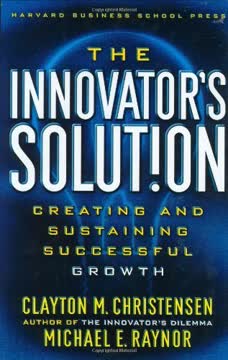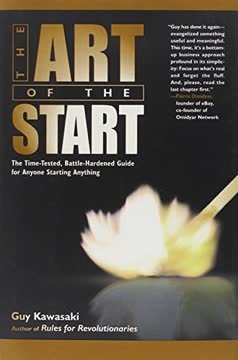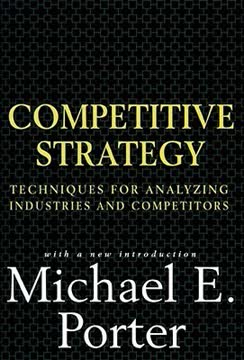重点摘要
1. 将你的想法分解为商业模式
精益画布取代了冗长乏味的商业计划书,用一页纸的商业模式,20分钟即可完成,并且真正被阅读。
可视化你的想法。 精益画布是一种快速捕捉想法的工具,帮助企业家将他们的想法分解为关键假设。它由12个不同的框组成,涵盖了商业模式的各个方面,包括客户细分、问题、独特价值主张、解决方案、渠道、收入来源、成本结构、关键指标和不公平优势。
简化和聚焦。 与传统的商业计划书需要数周时间编写且很少更新不同,精益画布可以在一次会议中快速绘制。这一过程迫使企业家将他们的商业模式提炼到其本质,使其更容易沟通和测试。
- 精益画布的关键组成部分:
- 客户细分
- 问题
- 独特价值主张
- 解决方案
- 渠道
- 收入来源
- 成本结构
- 关键指标
- 不公平优势
2. 爱上问题,而不是你的解决方案
值得解决的新问题来自旧解决方案。
避免解决方案偏见。 企业家常常陷入发明问题以证明他们预先设想的解决方案的陷阱。这种“创新者偏见”可能导致构建无人需要的产品。相反,应专注于理解和热爱问题,然后再跳到解决方案。
寻找转换触发点。 成功的创新通常解决了人们一直在容忍或绕过的旧问题。寻找“转换触发事件”,这些事件打破现有解决方案并导致人们转向新的解决方案。这种方法有助于识别值得解决的真实问题,并增加创建客户真正想要的产品的机会。
- 成功转换的例子:
- 磁带到CD:即时歌曲访问
- CD到MP3播放器:购买单曲
- MP3播放器到流媒体:访问数百万首歌曲
3. 牵引力是目标:用费米估算测试可行性
牵引力是商业模式从客户那里捕获可货币化价值的速度。
定义成功指标。 首先设定一个最低成功标准(MSC)——在3年内使你的项目成功的最小结果。这有助于对齐你的努力,并为测试你的商业模式的可行性提供基准。
使用快速估算。 与其创建复杂的财务预测,不如使用费米估算快速测试你的商业模式的可行性。这种信封背面的计算有助于根据关键假设(如定价、客户生命周期和转化率)确定你的想法是否有机会达到MSC。
- 费米估算的关键步骤:
- 设定最低成功标准(例如,3年内达到$10M ARR)
- 确定所需的活跃客户数量
- 计算最低客户获取率
- 估算所需的潜在客户数量
- 必要时调整商业模式
4. 首先识别和测试你最具风险的假设
如果你不知道你要去哪里,任何路都可以带你到那里。
优先考虑风险。 你的商业模式中的假设并非都具有同等重要性。识别最具风险的假设——那些如果被证明是错误的,会导致整个商业模式失败的假设。这些通常与问题-解决方案契合、定价或客户获取有关。
系统地测试。 一旦你识别出最具风险的假设,设计小而快速的实验来测试它们。这种方法允许你在投入大量时间和资源之前快速验证或否定商业模式的关键方面。
- 常见的风险假设:
- 客户问题的存在和紧迫性
- 支付意愿
- 客户获取成本
- 转化率
- 客户生命周期价值
5. 从客户开始,而不是投资者
如果你能展示任何牵引力,这会让你脱颖而出。
专注于客户验证。 与其急于向投资者推销,不如优先与潜在客户互动。这种以客户为中心的方法有助于验证你的问题-解决方案契合,并产生早期牵引力,这对投资者来说比一个精美的推介更有价值。
建立客户管道。 开发一个系统的过程来识别、联系和学习潜在客户。这不仅有助于完善你的产品,还创建了一个早期采用者基础,他们可以提供推荐和转介绍。
- 客户发现过程:
- 识别潜在客户
- 联系并安排面谈
- 进行问题发现面谈
- 展示解决方案概念并收集反馈
- 根据学习进行迭代
6. 通过客户发现定义你的最小可行产品(MVP)
最小可行产品(MVP)是创造、交付和捕获客户价值的最小解决方案。
从小而专注开始。 与其构建一个全功能的产品,不如识别解决客户最紧迫问题的核心价值主张。这使你能够更快地推出,快速学习,并根据真实的客户反馈进行迭代。
在构建之前验证。 使用客户面谈和低保真原型验证你的MVP概念,然后再进行开发。这种“演示-销售-构建”方法,而不是“构建-演示-销售”,确保你构建的是客户真正想要并愿意支付的东西。
- MVP验证步骤:
- 定义核心价值主张
- 创建低保真原型或模型
- 与潜在客户进行解决方案面谈
- 收集预订单或意向书
- 仅构建交付核心价值所需的内容
7. 通过理解不同的世界观来打造引人入胜的推介
好的创业不是强行推销你的解决方案,而是根据你的受众的预先存在的世界观来构建商业模式故事。
定制你的信息。 不同的利益相关者(投资者、客户、顾问)有不同的世界观和优先事项。根据他们的具体关注点和兴趣来打造你的推介,而不是使用一刀切的方法。
专注于价值和结果。 与其纠结于功能或技术,不如强调你的解决方案提供的价值和为目标受众带来的结果。这有助于创建一个更具吸引力和相关性的故事,引起听众的共鸣。
- 需要考虑的关键世界观:
- 投资者世界观:市场规模、货币化、防御性
- 客户世界观:问题、期望结果、采用难易度
- 顾问世界观:风险、机会、个人经验
- 竞争者世界观:差异化、定位、市场动态
8. 使用英雄之旅创建引人入胜的电梯推介
你是引导角色。
让客户成为英雄。 在你的电梯推介中,将客户定位为故事的英雄,而不是你自己或你的产品。这种方法使你的推介更具相关性和吸引力,因为它专注于客户的旅程和转变。
将你的推介结构化为一个故事。 使用经典的英雄之旅结构在你的电梯推介中创建一个引人入胜的叙事弧。这包括建立当前情况(之前),介绍触发事件,强调问题未解决的后果,并将你的解决方案定位为帮助英雄克服挑战的引导者。
- 英雄之旅电梯推介的要素:
- 介绍英雄(客户)及其当前情况
- 提出触发事件或挑战
- 强调问题未解决的后果
- 将你的解决方案定位为引导者或魔法礼物
- 描绘转变后的未来状态
最后更新日期:
FAQ
What's "Running Lean" about?
- Iterative Process: "Running Lean" by Ash Maurya is about iterating from an initial business idea (Plan A) to a plan that works by systematically testing and validating business models.
- Lean Canvas: The book introduces the Lean Canvas, a one-page business model that helps entrepreneurs deconstruct their ideas into key assumptions and test them.
- Mindset Shift: It emphasizes a shift from a build-first approach to a traction-first approach, focusing on customer problems rather than solutions.
- Continuous Innovation: The book outlines a framework for continuous innovation, helping entrepreneurs adapt and refine their business models in response to real-world feedback.
Why should I read "Running Lean"?
- Practical Guidance: The book offers practical, step-by-step guidance for entrepreneurs looking to validate and refine their business ideas.
- Avoid Common Pitfalls: It helps readers avoid common entrepreneurial pitfalls, such as building products that nobody wants or failing to secure stakeholder buy-in.
- Proven Framework: Ash Maurya provides a proven framework for systematically testing business models, which can increase the odds of success.
- Real-World Examples: The book includes real-world examples and case studies that illustrate the application of its principles.
What are the key takeaways of "Running Lean"?
- Business Model as Product: Treat your business model as a product that needs to be tested and validated, not just your solution.
- Focus on Traction: Traction is the ultimate goal, and it involves demonstrating that your business model works by achieving market adoption.
- Prioritize Risks: Identify and prioritize the riskiest assumptions in your business model and test them first.
- Iterative Learning: Use a cycle of modeling, prioritizing, and testing to continuously learn and adapt your business model.
What is the Lean Canvas, and how is it used in "Running Lean"?
- One-Page Business Model: The Lean Canvas is a one-page business model that helps entrepreneurs capture their ideas quickly and clearly.
- Key Assumptions: It breaks down a business idea into key assumptions, such as customer segments, problems, solutions, and revenue streams.
- Dynamic Model: Unlike traditional business plans, the Lean Canvas is a dynamic model that can be updated and refined as new information is gathered.
- Focus on Risks: It helps entrepreneurs focus on identifying and testing the riskiest parts of their business model first.
How does "Running Lean" define traction?
- Monetizable Value: Traction is defined as the rate at which a business model captures monetizable value from its customers.
- Evidence of Demand: It serves as evidence that there is demand for your product and that your business model is working.
- Investor Interest: Traction is crucial for attracting investors, as it demonstrates that your business has potential for growth and profitability.
- Customer Engagement: It involves customer engagement and adoption, indicating that your product is solving a real problem.
What is the "Innovator's Bias" mentioned in "Running Lean"?
- Solution-Centric Thinking: Innovator's Bias refers to the tendency of entrepreneurs to focus too much on their solution rather than the customer's problem.
- Inventing Problems: Entrepreneurs may unconsciously invent problems to justify their solution, rather than identifying real customer needs.
- Overcoming Bias: The book suggests overcoming this bias by focusing on customer problems and existing alternatives to uncover real problems worth solving.
- Innovator's Gift: The Innovator's Gift is the realization that new problems worth solving come from old solutions, guiding entrepreneurs to frame problems in terms of existing alternatives.
What is the "Traction-First Approach" in "Running Lean"?
- Focus on Market Adoption: The Traction-First Approach emphasizes achieving market adoption before building a complete product.
- Customer Validation: It involves validating customer demand and securing early adopters before investing heavily in product development.
- Avoiding the Build Trap: This approach helps avoid the build trap, where entrepreneurs spend too much time perfecting a product without validating demand.
- Iterative Development: It encourages iterative development, where entrepreneurs build, test, and refine their product based on customer feedback.
How does "Running Lean" suggest testing business model assumptions?
- Prioritize Risks: Identify the riskiest assumptions in your business model and prioritize testing them first.
- Small Experiments: Use small, fast experiments to test assumptions and gather evidence to support or refute them.
- Customer Interviews: Conduct customer interviews to validate assumptions about customer segments, problems, and solutions.
- Iterative Process: Continuously iterate on your business model based on the results of your tests and experiments.
What are the "Nine Mindsets" in "Running Lean"?
- Model Mindsets: Treat your business model as a product, love the problem not the solution, and focus on traction.
- Prioritize Mindsets: Take the right action at the right time, roll out in stages, and place many small bets.
- Test Mindsets: Make evidence-based decisions, prioritize discovery before validation, and recognize that breakthroughs require unexpected outcomes.
- Continuous Innovation: These mindsets support the continuous innovation framework, helping entrepreneurs adapt and refine their business models.
What is the "Minimum Viable Product" (MVP) according to "Running Lean"?
- Smallest Solution: An MVP is the smallest solution that creates, delivers, and captures customer value.
- Customer Validation: It is used to validate customer demand and gather feedback before building a complete product.
- Avoid Overbuilding: The MVP approach helps avoid overbuilding by focusing on delivering just enough value to test assumptions.
- Iterative Refinement: Entrepreneurs can iterate and refine their MVP based on customer feedback and learning.
How does "Running Lean" address the "Catch-22" of startups?
- Traction vs. Resources: The Catch-22 refers to the challenge of needing traction to secure resources, but needing resources to achieve traction.
- Traction-First Approach: The book suggests a traction-first approach, where entrepreneurs focus on achieving market adoption before seeking investment.
- Customer Engagement: By engaging customers early and validating demand, entrepreneurs can demonstrate traction and attract resources.
- Iterative Learning: Continuous learning and adaptation help entrepreneurs navigate the Catch-22 and build a sustainable business model.
What are the best quotes from "Running Lean" and what do they mean?
- "Your business model is the product." This quote emphasizes the importance of treating the business model as a product that needs to be tested and validated, not just the solution.
- "Love the problem, not your solution." It highlights the need to focus on customer problems rather than being attached to a specific solution.
- "Traction is the goal." This quote underscores the importance of achieving market adoption and demonstrating that the business model works.
- "Breakthrough requires unexpected outcomes." It suggests that innovation often comes from unexpected insights and learning, encouraging entrepreneurs to embrace uncertainty.
评论
《精益创业》被誉为创业者的实用指南,提供了逐步开发和测试商业创意的指导。读者们赞赏其对客户反馈、精益方法论和风险降低的关注。许多人认为这是初创企业的必读书籍,补充了其他精益商业书籍。书中强调快速迭代、MVP开发和系统测试,这些内容引起了创业者的共鸣。一些读者认为它对科技初创企业特别有用,而另一些人则认为它在各个领域都有适用性。少数批评意见提到其对B2C案例的关注以及与其他精益创业文献的潜在重叠。
Similar Books














